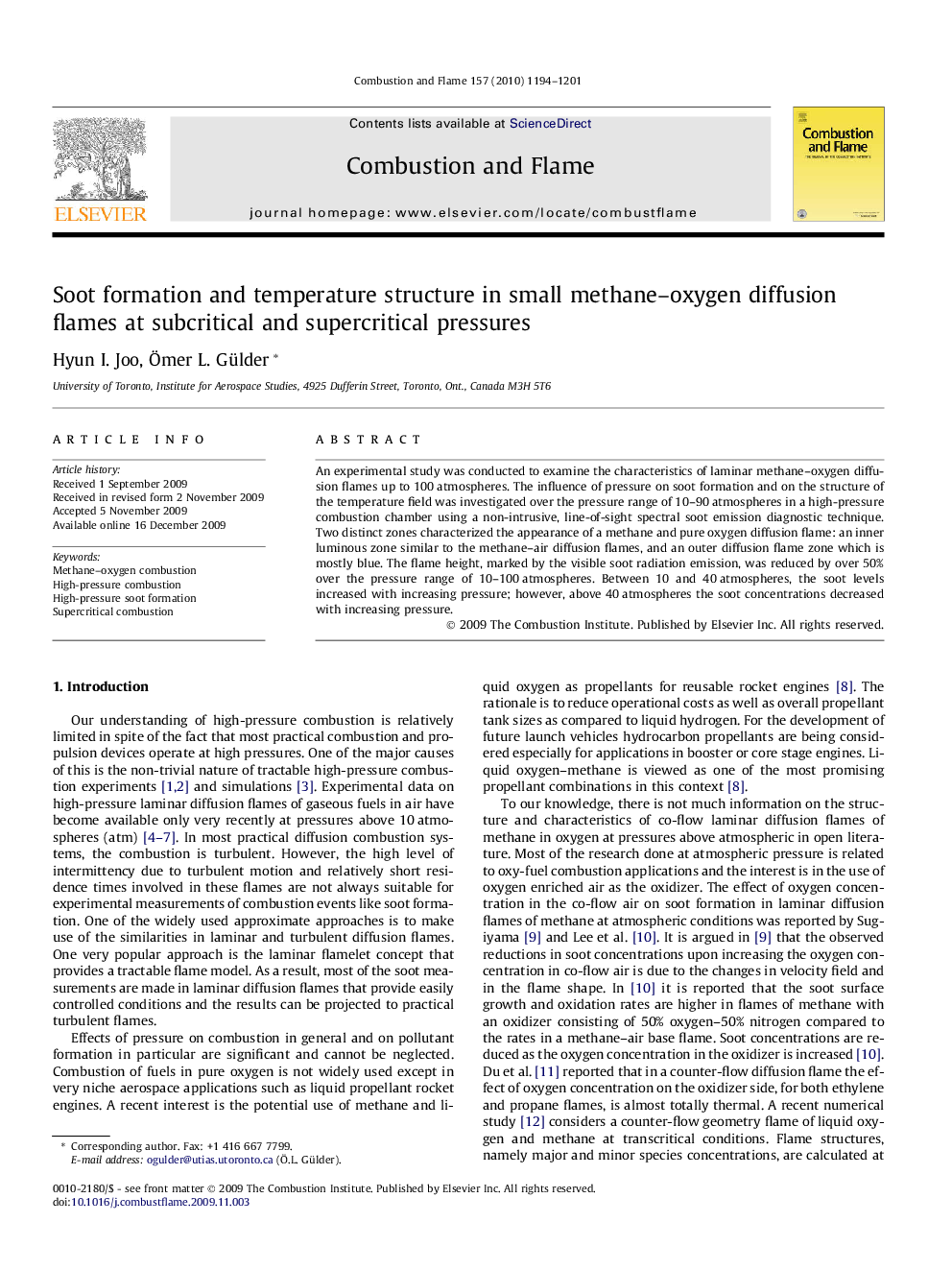| Article ID | Journal | Published Year | Pages | File Type |
|---|---|---|---|---|
| 166758 | Combustion and Flame | 2010 | 8 Pages |
An experimental study was conducted to examine the characteristics of laminar methane–oxygen diffusion flames up to 100 atmospheres. The influence of pressure on soot formation and on the structure of the temperature field was investigated over the pressure range of 10–90 atmospheres in a high-pressure combustion chamber using a non-intrusive, line-of-sight spectral soot emission diagnostic technique. Two distinct zones characterized the appearance of a methane and pure oxygen diffusion flame: an inner luminous zone similar to the methane–air diffusion flames, and an outer diffusion flame zone which is mostly blue. The flame height, marked by the visible soot radiation emission, was reduced by over 50% over the pressure range of 10–100 atmospheres. Between 10 and 40 atmospheres, the soot levels increased with increasing pressure; however, above 40 atmospheres the soot concentrations decreased with increasing pressure.
